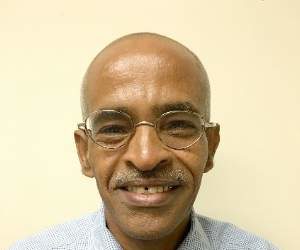From JAMA Neurology
Individuals with biopsy-confirmed celiac disease have more than double the risk of receiving a diagnosis of neuropathy when compared with the general population, and the risk persists even when other potentially contributing conditions and lifestyle factors are considered.
The use of Swedish population registries enabled first author Dr. Sujata P. Thawani of Columbia University, New York, and her colleagues to find that the risk of neuropathy was increased both before and after a diagnosis of celiac disease (CD).
“We found an increased risk of neuropathy in patients with CD that persists after CD diagnosis. Although absolute risks for neuropathy are low, CD is a potentially treatable condition with a young age of onset. Our findings suggest that screening could be beneficial in patients with neuropathy,” they wrote ( JAMA Neurol. 2015 May 11 [doi:10.1001/jamaneurol.2015.0475] ).Neuropathy has a known association with CD, an immune-mediated disorder characterized by sensitivity to gluten with an incidence of about 1% in Western Europe. Previous studies had reported that up to one-third of celiac disease patients also experienced neuropathy, but the literature had not completely characterized the prevalence of neuropathy in the CD population.
Dr. Thawani and her associates used Swedish pathology registers to identify individuals whose small intestine biopsies showed villous atrophy between 1969 and 2008 (Marsh stage 3, n = 28,232). These individuals were categorized as having CD. Neuropathy diagnoses were drawn from national patient and pharmacy registers. Each CD patient was matched with up to five age- and sex-matched controls (n = 139,473) from the Swedish Total Population Registry, all of whom were diagnosed in the same year and were from the same county as the matched CD patient.
Although 41.7% of CD patients were diagnosed in childhood, the median age at diagnosis was 29 years. About 62% of patients in both groups were female. For CD patients, the absolute risk of neuropathy was 64 per 100,000 patient-years, compared with 15 per 100,000 patients-years in the control group (hazard ratio, 2.5; 95% confidence interval, 2.0-2.9; P < .001).
The risk of neuropathy for patients with CD was not affected by gender, absolute age, or age at diagnosis. The risk of neuropathy for those with CD remained about 2.5 times higher than the matched controls, even after accounting for diabetes status, the presence of other autoimmune disorders, vitamin deficiencies, and alcohol use. Although vitamin B12 deficiency has been associated with CD and may contribute to neuropathy, the investigators noted that, “in our analysis, the influence of vitamin deficiencies did not significantly affect our risk estimate.”
Nonspecified neuropathy was the most commonly reported type of neuropathy. Other subtypes of neuropathy were tracked, but limitations of coding and reporting prevented tracking sensory ganglionopathy, the second most commonly reported neuropathy in CD.
The strengths of the study included the large sample size and the study’s statistical strengths. The retrospective nature of the study was an overall limitation, and the homogeneous study population (over 90% of patients in both arms were of Nordic heritage) limited the study’s generalizability.
Surveillance bias may account for some of the increased risk for neuropathy, noted Dr. Thawani and her colleagues. This was hinted at by the fact that a diagnosis of neuropathy tended to follow closely on the CD diagnosis; physicians may have been more attuned to detecting potential sequelae of the CD diagnosis during this time period. Notably, though, patients with a prior neuropathy diagnosis also were more likely to be diagnosed with CD, showing a bidirectional relationship.
“These data may also suggest that the two diseases may share risk factors or a common underlying etiology for the development of neuropathy, such as a potential role of immunologic mechanisms,” they wrote.
The authors reported no conflicts of interest. The investigators received support from the Swedish Society of Medicine, the Swedish Research Council, and the National Center for Advancing Translational Sciences.
cnnews@frontlinemedcom.com



